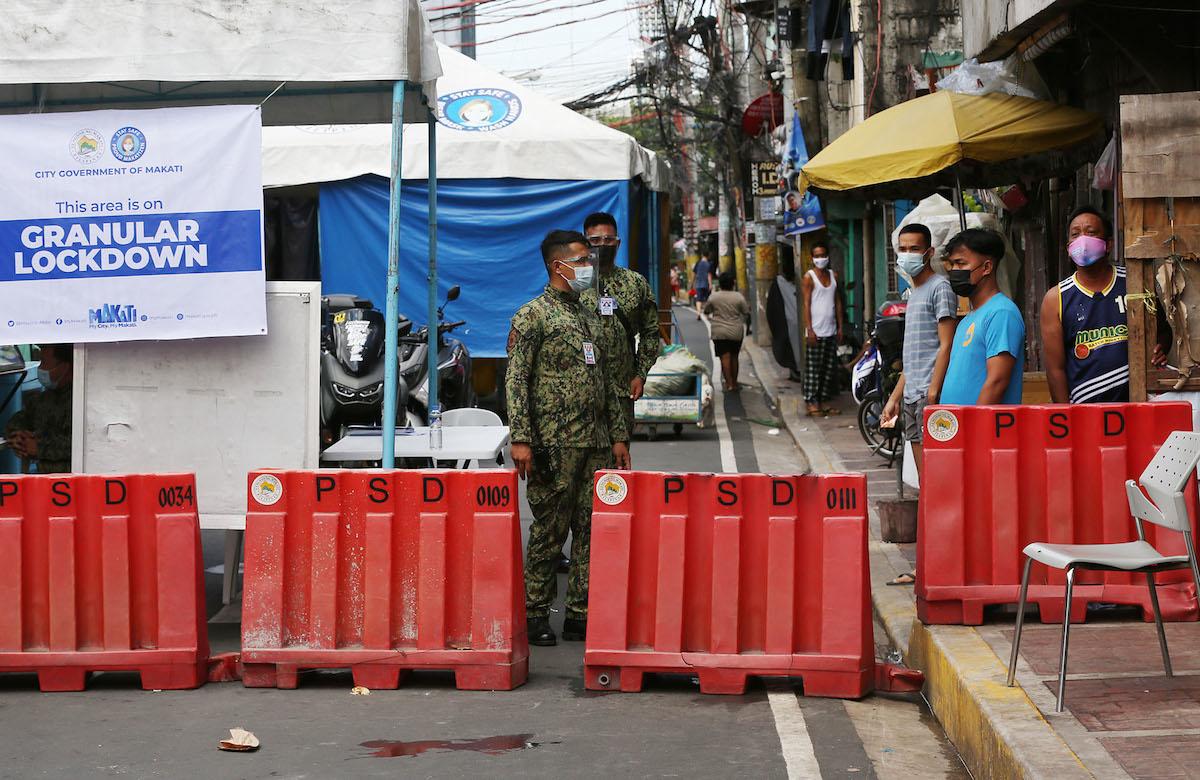
OCTA Research on Wednesday expressed support to the proposal to downgrade the Alert Level 4 in the National Capital Region (NCR), although an infectious disease expert said another two-week extension could be better.
“What we’re seeing is that actually for the first week of October, it was already possible, in our opinion, for a relaxation to Alert Level 3,” OCTA fellow Dr. Guido David said on CNN Philippines.
Alert Level 4 in the NCR is set to expire on Friday, October 15, after a two-week extension that started on October 1.
David said based on the metrics of OCTA Research, the NCR’s alert level may even be lowered to Alert Level 2.
“Even Alert Level 2 is possible right now,” he said.
(READ: How the new COVID-19 alert levels and granular lockdowns work)
Metropolitan Manila Development Authority chairman Benhur Abalos earlier said he personally favors the lowering of Alert Level 4 in NCR.
NCR is currently at moderate risk for COVID-19, according to OCTA. On Tuesday, the reproduction number in the region further slipped to 0.61.
David earlier said the NCR — the epicenter of the COVID-19 pandemic in the country — is winning against the more infectious Delta coronavirus variant.
‘Too early’
But according to infectious disease expert Dr. Rontgene Solante, it could be better for officials to wait until the end of October before lowering the alert level, saying doing it on October 16 is still “too early.”
“We’re not against the downgrading of the alert level. Tignan natin ‘yung downtrend ngayon, hindi pa ganon ka significant. Importante siguro nito tignan natin in the next two weeks kung talaga bang patuloy ang pagbaba ng kaso,” Solante said in a separate interview on Dobol B TV.
(The current downtrend in the number of cases is not yet that significant. Perhaps we should wait for two more weeks if this trend would continue.)
He also said health of medical frontliners must be taken into consideration as many healthcare workers have gotten sick amid the pandemic.
“That’s why even if you say mataas na ang healthcare capacity ngayon, tignan din kung meron bang tamang o sapat na mga tao na mag-alaga doon sa mga pasyente,” Solante said.
(If you say that the healthcare capacity has improved, you should also see if there is enough health workers to attend to the patients.)
“This is the time that we must also give a break to some of the healthcare workers,” he added.
‘Strike the balance’
When asked about the concern of healthcare workers, David assured that it is unlikely for hospitals to be “overwhelmed” at this time.
“We understand the concerns of healthcare workers, the frontliners. But at some point, we have to strike the balance. If there is a significant risk that they could be overwhelmed then, of course, we would recommend accordingly,” he said.
“It’s possible but we are, in terms of probability, we don’t think it’s likely at the moment because we think we’re already at the tail-end of the Delta surge,” David added.
The Department of Health previously projected that daily cases in the NCR may increase to more than 4,000 under Alert Level 3 where detection to isolation time is prolonged.
Meanwhile, under an Alert Level 3 with a shorter detection to isolation time, the DOH said daily cases may increase to 3,311 to 3,605. —KBK, GMA News

0 Comments